
Loading Aqualapp ...
Care and Compatibility of Socolofi Cichlid - Pseudotropheus socolofi
Introduction
Pseudotropheus socolofi, commonly known as the Socolofi Cichlid, is native to Lake Tanganyika in Africa. It is distinguished by its bright blue coloration with a white or silver band across the body, giving it a striking appearance. It is a popular aquarium fish due to its vibrant color and interesting behavior.
Behavior
The Pseudotropheus socolofi is a territorial and aggressive fish, especially during the breeding season. Males may display dominant behavior towards other males, so it is recommended to keep them in a tank with enough space and hiding spots. Providing rocky hiding places and separate spaces can help reduce aggression between individuals.
Sexual Dimorphism
Males and females of Pseudotropheus socolofi look similar, but males are usually larger and may have more intense coloration. During breeding, the female shows mouthbrooding behavior while the male focuses on protecting his territory.
Reproduction
Breeding Pseudotropheus socolofi in captivity can be successful if proper conditions are provided. The female will incubate the eggs in her mouth after fertilization, and the fry will be released when they are sufficiently developed. Providing a tank with rocks and hiding spots is recommended to facilitate the breeding process.
Aquarium Conditions
The tank for Pseudotropheus socolofi should be well decorated with rocks and caves, as this fish enjoys an environment with many structures to explore and establish territories. Filtration should be efficient to keep the water clean and with low nitrate levels.
Feeding
Pseudotropheus socolofi is an omnivore that accepts a varied diet in the aquarium. Its diet should include high-quality dry foods as well as live or frozen foods like brine shrimp and daphnia. It is recommended to feed it two or three times a day in small amounts.
Complexity
Caring for Pseudotropheus socolofi is moderate to advanced. It requires a well-structured tank and a varied diet. Understanding the aggressive behavior of this species and providing enough space to minimize conflicts is important.
In case you need more help, or if you want to know into any topic related to the Pseudotropheus socolofi (Socolofi Cichlid) and even any other species you can use the forums to ask what you need.
To do an analysis more detailed about coexistence and behavior of Pseudotropheus socolofi (Socolofi Cichlid) use the Aquarium simulation tool, if you do this you can test different ways to combine the Socolofi Cichlid with other fishes giving the dimensions and space on you aquarium, on this way you can known the optimal configuration for keep the fishes that you want.
You can also find out the 20 species compatible with the Pseudotropheus socolofi (Socolofi Cichlid) can live together.
Note: The parameters of the water such as PH and temperature are also used to calculate the compatibility of the species.
Compatible species (20)
No species is compatible with the Socolofi Cichlid, however, 20 fish are semi compatible with the Socolofi Cichlid with certain conditions special.
With Reservation (20 Species)
Las especies territoriales por lo general pueden convivir con especies protegidas con coraza, ya que no pueden hacerles daño por su dura piel, lo que si hay que tener en cuenta es tener un acuario con dimensiones favorables para que cada pez pueda delimitar un territorio, ya que la mayoría de peces acorazados son también peces de fondo y les gusta estar buscando lugares donde ocultarse.
Estos peces son ciclidos africanos del lago Malawi agresivos, por lo general pueden convivir con otros Mbunas agresivos si cuentan con espacio suficiente en el acuario, rocas y escondites donde puedan refugiarse de ser necesario.
Socolofi Cichlid
Pseudotropheus socolofi
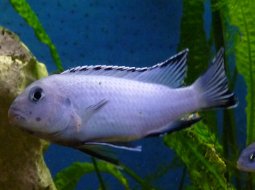
- Ph: 7.5 - 9
- Temperature (c°): 24 - 28
- Measures: 9 cm - 12cm
- Aquarium Capacity:
18 Liters - 5 Gallons - Alimentación: Omnivores
- Comportamiento: Aggressive, Territorial
- Habitad: African
- Morfología: Thorns or pointed
- Preferencias del Acuario: Caves, Rocks
- Tamaño: Medium
- Taxonomía: Cichlids, Fish, Mbunas
- Tipo de Agua: Sweet water, Tropical waters
- Velocidad de nado o movimiento: Normal
- Zona de Nado: Aquarium background, Swim in the middle of the aquarium


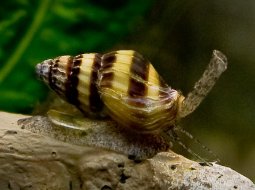
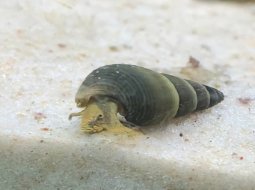
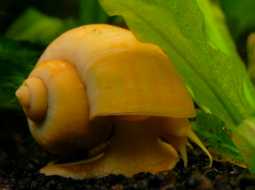
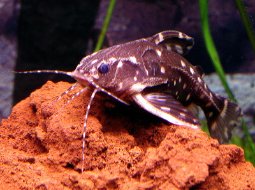
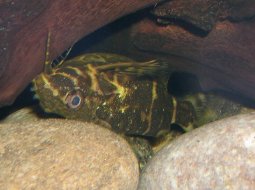
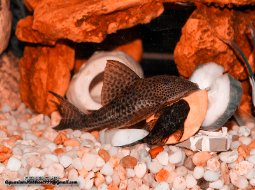

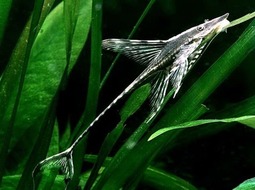
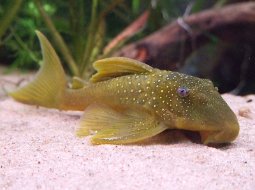
.jpg)
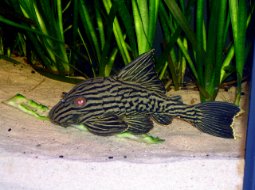

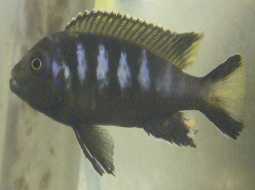

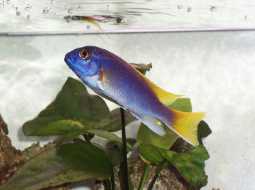
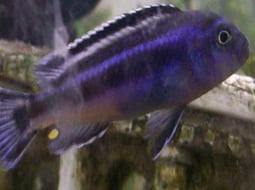
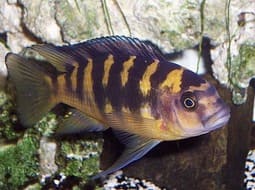
.jpg)